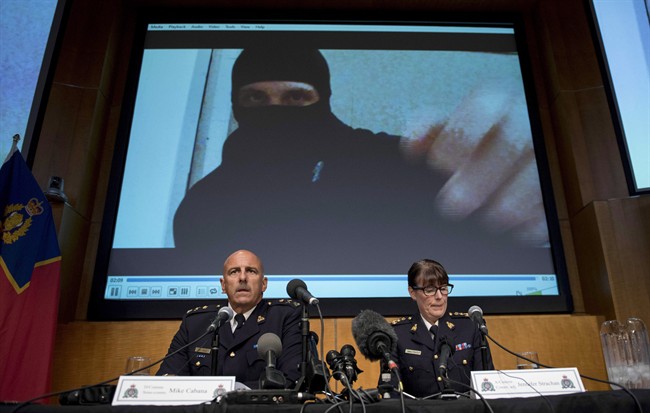Terrorists are becoming more disciplined and secretive in how they communicate, a federal report on terrorism threats to Canada warned Thursday.

“The growing use of encryption was brought to public attention during investigations into recent terrorist attacks outside Canada,” the unsigned report from Public Safety Canada says. “Encryption technology helps protect the privacy of Canadians, but also creates new barriers in law enforcement and national security investigations.”
READ MORE: More female extremists leaving Canada to join Islamic State: report
Until recently, ISIS made extensive use of social media. It helped them build relationships with potential recruits in the West, but also gave security services a vast amount of intelligence.
“It came about accidentally,” explains University of Waterloo professor Lorne Dawson. “Young guys, mainly, were going to fight in Syria and keeping their (social media accounts) intact. From Twitter on, they just kept their accounts intact and continued to communicate with people.”
While Canada has not yet seen a major terrorist attack, terrorism poses an ongoing threat. Earlier in August, RCMP officers shot would-be terrorist Aaron Driver as he got into a taxi in Strathroy., Ont. with what turned out to be two bombs. One detonated in the car.

ISIS then created its own digital culture, “flooding social media, and cyberspace in general, with information. They were also turning out about six to eight videos a day. People all over the world set up conversations with members of ISIS and other groups that were fighting in Syria.”
The result was a two-edged sword. Drifting teenagers in Western countries discovered a dramatic new world of online Islamic radicalism, and in some cases went to the Middle East to fight. (Their parents only found out was going on when they got a call from Turkey, Dawson says.)
READ MORE: Aaron Driver: Canada won’t be lucky forever, terror experts warn
On the other hand, the group became something of an open book, not only to governments but to other researchers.
“It made the whole process of trying to prevent radicalization a hell of a lot more difficult, but it was a tremendous intelligence opportunity because people were expressing their views quite openly online, and seeming not to appreciate the extent to which all of this would be intercepted.”
In the last six months or so, however, ISIS has become much more secretive online. Part of the cause was that the group is starting to be defeated on the battlefield, but part is that they have become much more security-conscious. The result, Dawson says, is much more use of encryption and a shift from Twitter to Telegram, an encrypted cloud-based instant messaging service. The process of getting warrants to access Telegram slows down intelligence-gathering.


Comments